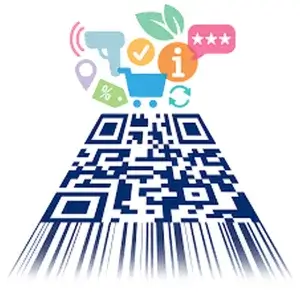Why you need to consider centralizing marking control — it’s easier than you think
Do you have control of marking and coding across your whole operation? If the answer is no, you are missing out on serious benefits to your bottom line.
Marking and coding hold an essential place on the factory floor. Every mark contains critical information for product safety, traceability, and compliance.
Yet in many factories marking and coding processes are not integrated. Each line has a printer, but there is no central control. As a result, operators spend more time than necessary on creating and editing messages and managing changeovers across multiple controllers.
Errors due to manual message updates happen and lead to product rejection by customers and/or spoilage or rework. And every time you want to expand with another product line, you are adding even more complexity and potential for error.
The good news is that you can take control using automated marking technology that integrates printers and label printer applicators on your production line. For maximum flexibility, it’s important that your controller is fully technology agnostic and can support the best – and more cost effective — solution for each stage of your operation.
Does centralization mean that you only have one controller for the entire production? Let’s clear that up. In a typical plant with centralized marking systems, one or two controllers are networked together on the production floor with another in the management office. This configuration provides controller redundancy while providing a centralized view from several convenient locations. You could also choose to see the centralized view remotely from a PC, smart phone or tablet.
Here are three reasons for centralizing control of marking and coding across your operation:
1. Maintain consistency and accuracy
Consistency and accuracy are non-negotiable when it comes to coding your products. Failure to get is right can be costly both in terms of impact to the bottom line and your reputation.
With centralized control of your marking and coding processes, you can ensure code accuracy from product to pallet and eliminate costly errors. Data can automatically flow from PLCs, ERPs, and other backend systems to create accurate coding across all packaging – no matter how many message formats you are dealing with.
For example, whether it’s a barcode, 2D code, or a human-readable date, a controller capable of centralization, such as the MPERIA platform, can manage and print messages to your whole line from one controller. You can also integrate auxiliary equipment, including scanners, scales, pallet labelers and vision systems, to ensure consistency in code appearance and placement across products in multiple locations. You may be concerned that one centralized view will be too complicated and reduce accuracy, but the right controller will keep things simple and organized. Once you switch, you’ll wonder why you didn’t do it years ago.
2. Faster changeovers
No matter how automated a manufacturer’s process is, everything comes to a screeching halt when it’s time to perform a line changeover. These days, changeovers occur more frequently than in the past due to changing consumer demand and mass personalization, so pressure is on operators to get them right quickly and efficiently.
So, how do you make sure slow changeovers aren’t costing your business money?
Consider the scene without integration:
Whenever a new product or order is run, an operator needs to make changes on the control panel for each piece of marking equipment on the production line. The process is time-consuming and prone to coding errors that can result in rework or rejections — which come at a very high cost.
Now consider it with integration:
A centralized controller, such as the MPERIA platform, lets you manage all your printers, labelers, vision systems, and coders from one location. Because everything is networked to a central database, a straightforward operator action on a single controller can achieve product changes down an entire production line.
Product codes and setup parameters are preloaded in the system, meaning changeovers are as simple as choosing the new product, often by scanning a barcode so there’s no data entry error, and confirming that the system is set correctly. This results in faster and more accurate changeovers and less chance of human error.
3. Set up for long-term success
As your production operation grows and you add additional lines, how can you ensure your coding and marking process isn’t holding you back? This especially important as you grow your operation and the number of production lines
You need a platform that can grow with you, allowing you to scale your operations without losing efficiency.
Marking automation and integration with your ERP and other supply chain software will support traceability and supply chain initiatives. For example, you can keep pace with the shift to 2D barcodes like QR and data matrix codes, and other complex compliance requirements.

Such integration requires a flexible open source platform, like the MPERIA controller. This platform easily scales to control dozens of printers and other devices across multiple lines with nearly unlimited message creation capabilities. When business systems need to be integrated, MPERIA automates data flow from those systems – without the need to invest in complex middleware.
Take complete control with MPERIA
The MPERIA automated marking solution seamlessly integrates into existing production environments, ensuring accurate and consistent marking to eliminate human errors. With a user-friendly interface controlling all equipment from a single platform, MPERIA streamlines message creation and changeovers for maximum efficiency.
Register for a free demo
Time to upgrade your marking and coding solution? Request a demo to try the MPERIA Controller. Or chat to our team to find out more. Contact us on 800.775.7775 or fill out the quick form below.
